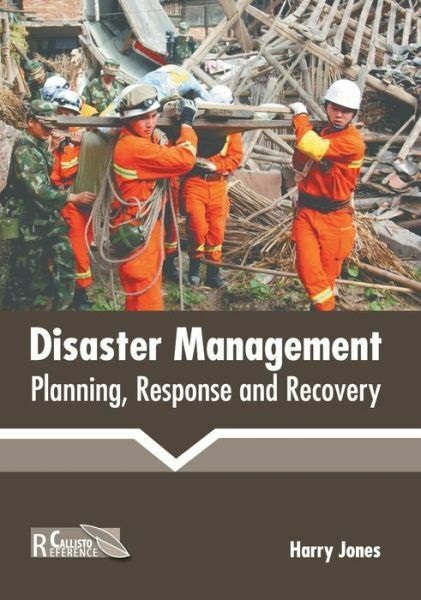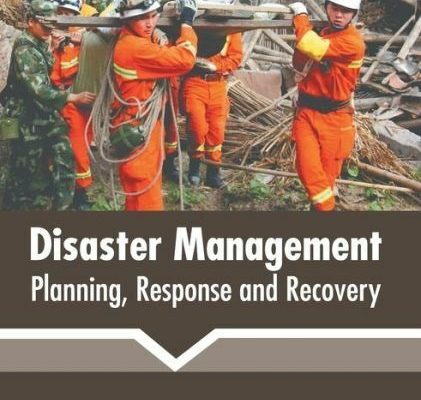Introduction
Disaster management and planning are critical components of ensuring the safety and resilience of communities against natural and man-made hazards. Effective disaster management involves a comprehensive approach to preparing for, responding to, recovering from, and mitigating the impacts of disasters. This extensive overview will cover the key aspects of disaster management, including its phases, strategies, and the importance of community involvement and technological advancements.

Phases of Disaster Management
- Mitigation
Mitigation involves efforts to reduce the severity and impact of disasters. This phase includes the development of policies and strategies to prevent hazards or lessen their effects. Examples include building codes, land-use planning, and public education campaigns aimed at raising awareness about disaster risks. Mitigation can significantly decrease the long-term risks to people and property. - Preparedness
Preparedness activities aim to ensure that communities, governments, and organizations are ready to respond effectively to disasters. This includes creating disaster response plans, conducting drills and exercises, and establishing early warning systems. Preparedness measures are crucial for minimizing the chaos and damage during an actual disaster. - Response
The response phase involves immediate actions taken to save lives, protect property, and meet basic human needs following a disaster. This includes search and rescue operations, providing emergency shelter, food, and medical care, and restoring critical services. The effectiveness of the response phase often depends on the level of preparedness and the availability of resources. - Recovery
Recovery efforts focus on restoring affected areas to their pre-disaster conditions. This phase includes rebuilding infrastructure, providing financial assistance to affected individuals and businesses, and offering psychological support to survivors. Recovery can be a long-term process that requires coordination among various stakeholders, including government agencies, non-profits, and the private sector.
Strategies for Effective Disaster Management
- Risk Assessment and Hazard Mapping
Identifying and assessing potential hazards is a foundational step in disaster management. Risk assessment involves analyzing the likelihood and impact of different types of disasters, while hazard mapping visualizes the areas most at risk. This information is crucial for informed decision-making and resource allocation. - Integrated Planning and Coordination
Disaster management requires a coordinated effort among multiple agencies and organizations. Integrated planning ensures that all stakeholders are on the same page and that resources are used efficiently. This includes establishing clear communication channels and protocols for collaboration during all phases of disaster management. - Community Involvement
Engaging the community in disaster management efforts can significantly enhance resilience. Public participation in planning, preparedness, and response activities ensures that local knowledge and needs are incorporated. Community-based initiatives, such as volunteer programs and local disaster committees, empower residents to take an active role in their safety. - Capacity Building and Training
Building the capacity of individuals and organizations to manage disasters is essential. This includes providing training for emergency responders, educating the public about disaster preparedness, and enhancing the capabilities of local governments. Capacity-building efforts help ensure a more effective and coordinated response to disasters. - Technology and Innovation
Technological advancements play a critical role in disaster management. Innovations such as Geographic Information Systems (GIS), remote sensing, and early warning systems improve hazard detection and monitoring. Social media and mobile applications facilitate real-time communication and information sharing during emergencies.
The Importance of Community Involvement
Community involvement is a cornerstone of effective disaster management. Local communities are often the first responders in the aftermath of a disaster, and their participation in preparedness and response activities can significantly improve outcomes. Community-based disaster risk reduction (CBDRR) approaches involve local stakeholders in assessing risks, planning interventions, and implementing solutions. This participatory process ensures that disaster management strategies are culturally appropriate and tailored to local contexts.
Community involvement also fosters resilience by building social capital and strengthening networks of support. Training community members in first aid, search and rescue, and other emergency skills empowers them to act quickly and effectively during a disaster. Additionally, public awareness campaigns and education programs can change behaviors and attitudes, promoting a culture of preparedness and safety.
Technological Advancements in Disaster Management
The integration of technology into disaster management has revolutionized the field. Technologies such as GIS and remote sensing provide detailed and accurate data on hazard zones, enabling better planning and risk assessment. Early warning systems, which use a combination of sensors, satellite data, and communication networks, can provide timely alerts to at-risk populations, allowing for swift evacuation and other protective measures.
Social media platforms have become invaluable tools for disaster communication, enabling real-time information sharing and coordination. Mobile applications can disseminate emergency alerts, provide safety information, and facilitate the reporting of incidents and needs. Additionally, advancements in artificial intelligence (AI) and machine learning are being used to predict disaster impacts and optimize resource allocation during response and recovery efforts.
Conclusion
Disaster management and planning are essential for safeguarding communities and ensuring resilience against natural and man-made hazards. By understanding the phases of disaster management—mitigation, preparedness, response, and recovery—stakeholders can develop comprehensive strategies to address potential risks. Effective disaster management requires integrated planning, community involvement, capacity building, and the use of technological innovations. Through these efforts, communities can better prepare for, respond to, and recover from disasters, ultimately reducing their impact and saving lives.




